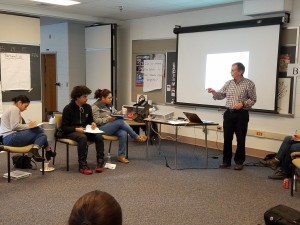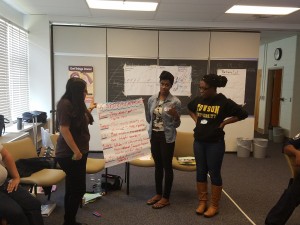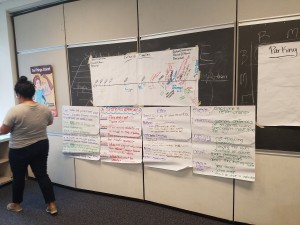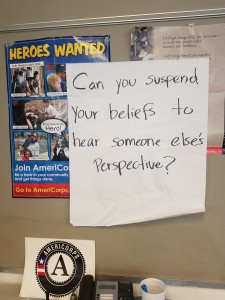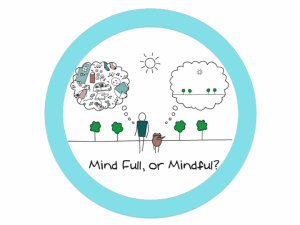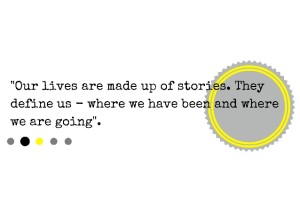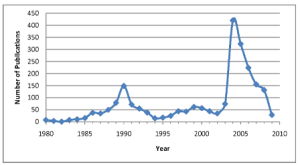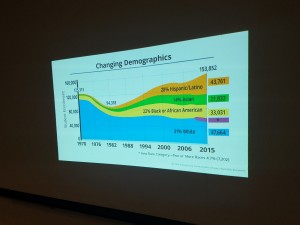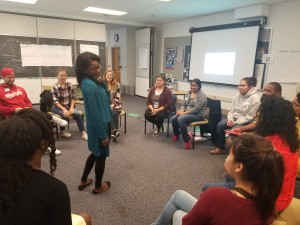 Today the AmeriCorps Project CHANGE team learned about a new personal effectiveness tool known as Social Styles. Our expert John Dold put the members through their paces, inviting them to assess their personal styles under the headings of:
Today the AmeriCorps Project CHANGE team learned about a new personal effectiveness tool known as Social Styles. Our expert John Dold put the members through their paces, inviting them to assess their personal styles under the headings of:
Expressives
Drivers
Amiables
Analyticals.
It created a fascinating discussion between us, as the expressives expressed their feelings and the drivers drove home their insights while the Analytics sat back and more rationally examined what was going on, what did the data say, and the Amiables kept everyone happy. It was a perfect demonstration of the styles. We on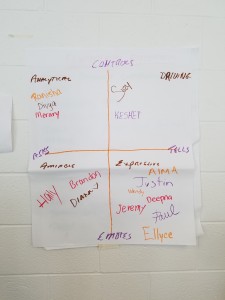 ly have one driver, and plenty of expressives. Who is surprised?
ly have one driver, and plenty of expressives. Who is surprised?
What did we learn? That we all have our preferred style and that others may have a personal style that is different and not necessarily compatible with ours. When we Expressives get frustrated with the team member who goes on and on about the details, we have to realize that the Analyticals get just as frustrated with the over-excited Expressives who gush and enthuse about every thing. Or the Amiables who want to keep everyone happy and find the dynamic and decisive style of a Driver to be too much. Its not that any style is wrong, but that we all need to be flexible and try on different styles to suit the need.
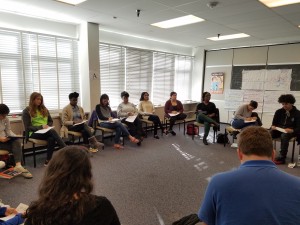 Vive La Difference it is when it comes to personality types. Whether one model fits or not, they all make the point that none of us come at the world in exactly the same way. We should not presume that our view is the only view. We are all shaped by so many different variables, from genes to upbringing and language, and culture that our AmeriCorps team is a model of diversity, in ethnicities, languages and personalities. Today we learn to cherish that.
Vive La Difference it is when it comes to personality types. Whether one model fits or not, they all make the point that none of us come at the world in exactly the same way. We should not presume that our view is the only view. We are all shaped by so many different variables, from genes to upbringing and language, and culture that our AmeriCorps team is a model of diversity, in ethnicities, languages and personalities. Today we learn to cherish that.
